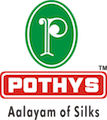In the last couple of years, conversations about influencer content, especially those based on paid or barter arrangements have been getting louder, and not without reason. Influencer marketing is an increasing part of social media and digital campaigns for many brands, be they in tech, beauty, retail, fashion, e-comm or others.

At Inception, we routinely collaborate with influencers across client projects and we recently concluded an Instagram specific campaign using 40 influencers via an aggregator for a client’s product launch. When we plan influencer content, we are as marketers ever-conscious to mandate ethical practices and drive disclosures or transparency that ensures the trust between brand-influencer-audience is not broken.
Unfortunately, this is not always the case across the industry. This is why, The Advertising Standards Council of India (ASCI), has been working on a draft guideline for Influencer Advertising in India, which comes into effect from 14th June 2021. This initiative comes under the purview of ASCI.Social – a platform for influencers and creators to learn about how they can be more responsible and maintain the trust of audiences and brands*.
To understand what all influencer activity for brands come under the purview of these guidelines, which are largely self-regulatory, one must understand the spirit behind the exercise. As a responsible marketer, I am encouraged by the wordings used by ASCI which prompts brands and agencies to adopt disclosures that “an ad is an ad”. This has been the biggest area of grey when it comes to influencer campaigns. Not all viewers recognise a collaborative piece of content whether it influences their purchase decision or simply their opinion about a product or service. This disclosure method, to be done upfront will ensure they know there is a material connection between influencer and brand. This material connection could be payment, barter or others. The onus for disclosure is on both advertiser and influencer. In the case of the use of virtual influencers such as an avatar, mascot or fictional character, the onus is on the advertiser.
This is a great step to ensure audiences are made easily aware of independent user-generated reviews or content as different from paid or collaborative influencer content. The disclosure labels currently approved (ASCI may continue to review and expand this list) are:
#ad
#collab
#promo
#sponsored
#partnership
These disclosure labels must appear within the first two lines of the platform content either in English or in vernacular if the content is in a vernacular language.
It is really that simple. This is a much-needed step, especially to quell the uncomfortable questions raised when social promoted content can be mistaken for real, “un-influenced” opinion. Even before these guidelines emerged, many advertisers and larger influencers and of course platforms like Instagram have made the distinction clear using tags, hashtags. With aggregators and agencies going after even micro and nano influencers to amplify product launches, etc this guideline can ensure there is no ambiguity.
I was recently part of a Clubhouse discussion with agencies, brands, influencers and reps from ASCI. It was great to listen to perspectives across the ecosystem. There are still some areas that need ironing out, for instance, what about the free products given for editorial reviews or high-value products in Tech, Gadgets and Automobiles? If every stakeholder understands the guidelines in spirit, there seems to be no doubt that disclosures are at least one positive step forward.
Increasing the number of conversations and awareness about these guidelines can go a long way in safeguarding all stakeholders interest, and even more so the sanctity of the trust of audiences across social / media platforms, many of whom are vulnerable (or gullible!) based on age, circumstance, digital naïveté, etc.
If you are a brand, agency and a member of ASCI, you can take the pledge to follow these guidelines here.
Here is the link to ASCI.Social where the guidelines are available for reading or download. If you’d like to circulate to your team and clients, I also recommend this colourful and crisp explanation by Afaqs.
At Inception, we recently concluded influencer campaigns on two key brand accounts and as always this continues to be a part of our ongoing brand plans across accounts. Our teams are ensuring that the previous care we took in influencer campaigns is further bolstered by ensuring these guidelines are followed. I sincerely hope you will too! Let’s keep social and digital media clean, safe and trustworthy for every user.









